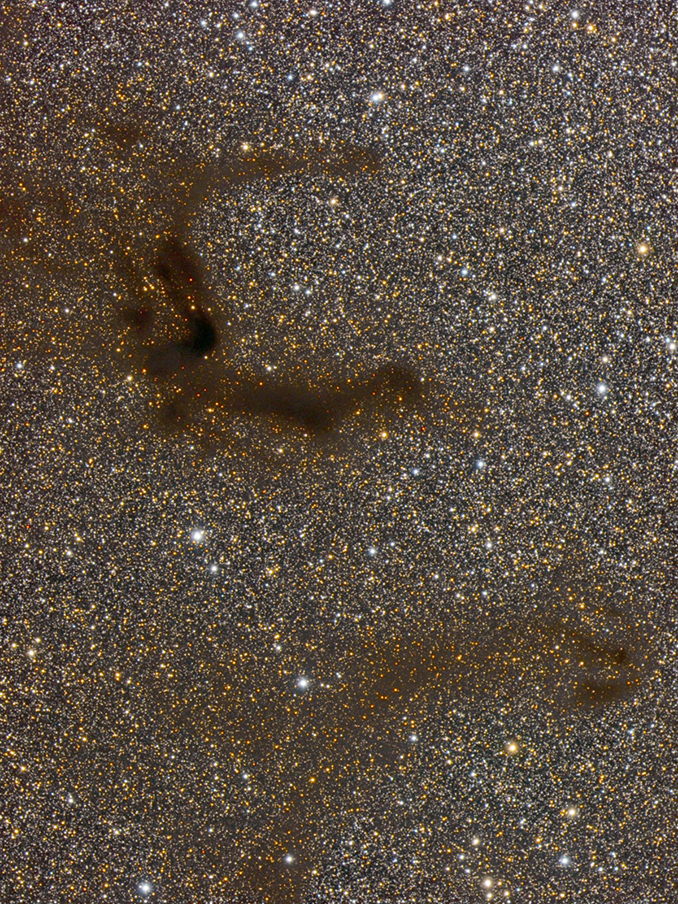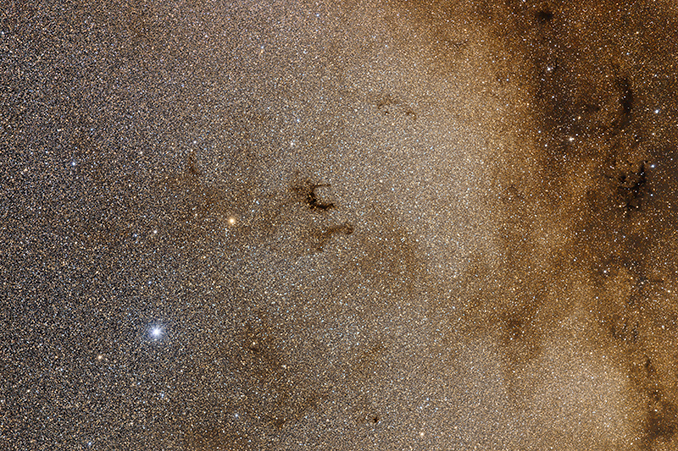
Barnard’s ‘E’ in Aquila is formed from the dark nebulae Barnard 142 and 143 (B142/143). At their most dramatic, dark nebulae, dark clouds of interstellar gas (largely molecular hydrogen) and dust that can block out or obscure the light from stars and other objects lying beyond it, are spectacular deep-sky objects. Looking through a pair of binoculars and wide-field images like a giant, black ’E’ on the sky, silhouetted against the star-strewn backdrop of Aquila’s outstanding Milky-Way star fields, Barnard’s ‘E’ effortlessly fits the bill.

How to observe:
Barnard’s ‘E’ is easy to locate; sweep merely 1.3 degrees west-north-west of Tarazed (gamma [g] Aquilae; magnitude +2.7), the distinctly orange-hued star that lies two degrees north-west of Altair (alpha [a] Aquilae; +0.8). Barnard’s ‘E’ can be observed throughout August’s lengthening nights, culminating from London soon around 11pm BST at an altitude of around 50 degrees.
Barnard’s ‘E’ spans about a degree, around two full Moon’s worth of celestial real estate. A humble pair of 10 x 50 binoculars and a low-powered small telescope can show it well on a moonless night. Barnard 143 lies north of Barnard 142 and is easier to spot, looking like a ‘C’ or an open mouth. Barnard 142 is significantly less conspicuous, forming the lower horizontal bar of the ‘E’. The lower part of the E’s upright is subtle indeed in deep images. At higher powers, look for subtle structure within the ‘E’.




